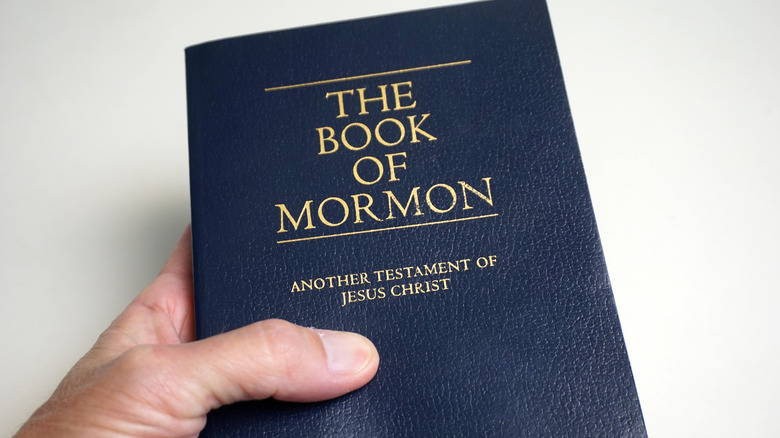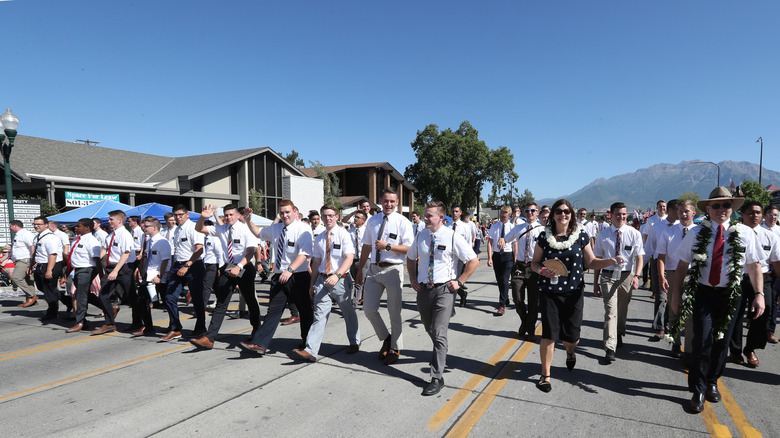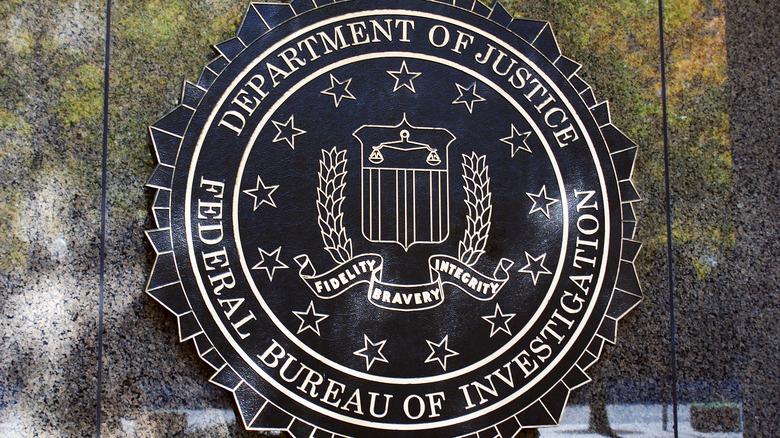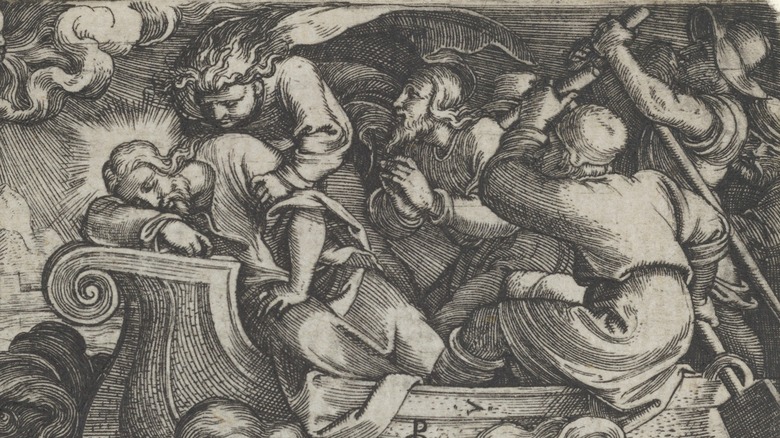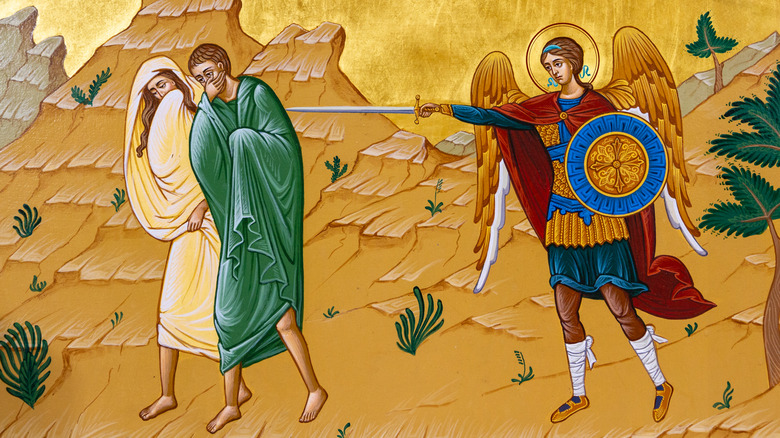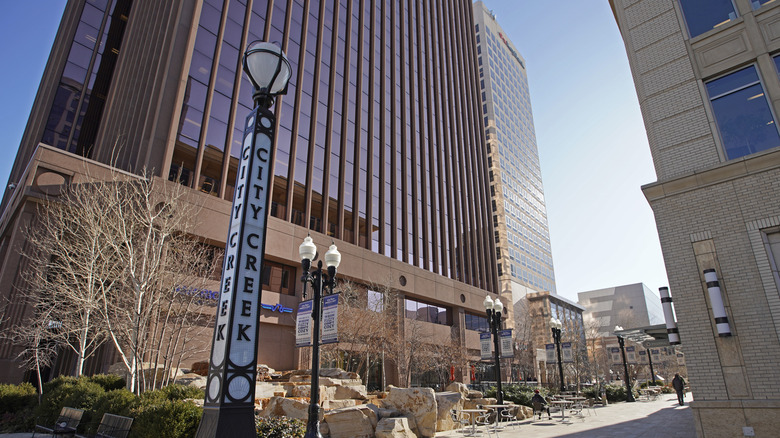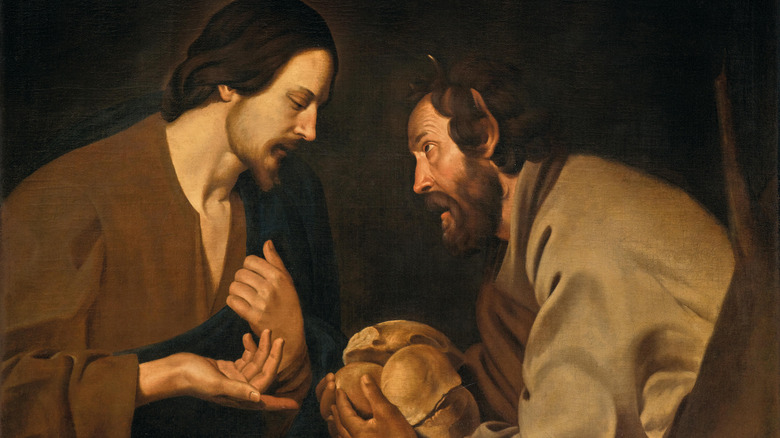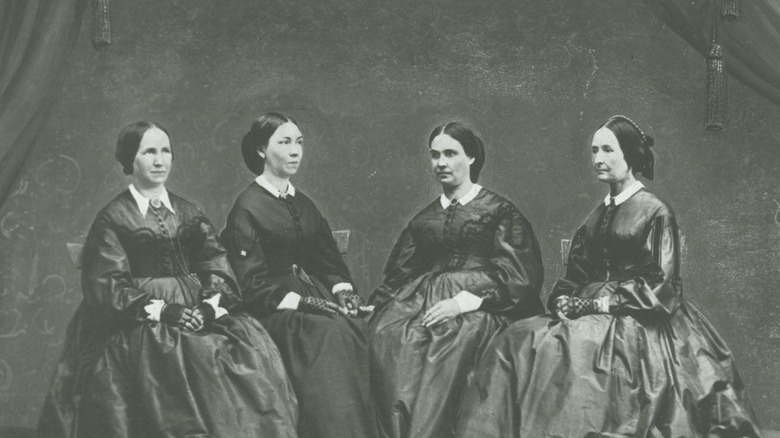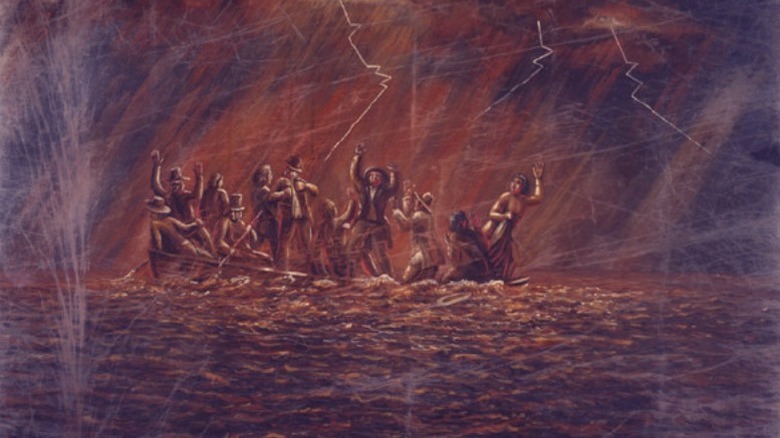The Untold Truth Of The Church Of Jesus Christ Of Latter-Day Saints
A lot of people get their knowledge of the Church of Jesus Christ of Latter-day Saints from one or both of two sources; Matt Stone and Trey Parker, creators of "South Park" and the musical "The Book of Mormon;" and the sharply dressed young men who show up at your door, asking if you can spare a minute to talk about the Lord Jesus Christ. Both sources have their facts, and both sources have their fictions, mostly from misplaced assumptions. Consider that, in a 2012 survey of the general American public, the Pew Research Center reported that over 60% of people admitted to knowing either "not much" or "nothing" about the Mormon faith. In the same study, people were asked if they thought Mormonism was a Christian faith, which it absolutely is, yet only 51% of those surveyed said that it was.
Anyone who has seen the Broadway musical "The Book of Mormon" may count themself in the minority of people who do know something about the faith, even if it's not all correct. The musical was, after all, designed to poke fun at the beliefs of Latter-day Saints. Yet, like most things Mormon, there are a lot of misconceptions and stigmas that are just untrue. Then there are the kindly young men who show up on your doorstep, who often get ignored or shooed away like they are traveling salesmen, trying to sell homeowners on a better version of themselves. What's great about the Mormon faith is that there is no effort to hide from anything distinctly Mormon. As Matt Stone and Trey Parker's musical revealed, even when being openly mocked, the response from Mormons is generally warm. As such, here is the untold truth of The Church of Jesus Christ of Latter-day Saints.
They are growing — big time
Some may think of Mormonism as a small, niche religion based solely in Utah, and nowhere else — this may well have been the case in the past, but their numbers have been on the rise in recent years. The kind of rise where even a slower year still sees them growing more than the average religion. Take Protestant Christianity, for instance, which is losing followers at a significant rate: In the U.S. alone, the percentage of Protestant Christians dropped from 51% in 2009 to 43% a decade later, via the Pew Research Center.
The Church of Jesus Christ of Latter-day Saints, however, continues to grow. According to the Mormonism Research Ministry, Mormons had their slowest year in recent times in 2020, due largely to the pandemic and the subsequent inability of missionaries to get to doors safely. But even in their worst year in modern history, they still baptized 98,627 members, which equates to 0.6% growth overall. While it's not as much as the Mormon church had been growing before, Mormons still represent 1.6% of the U.S. population, according to the Pew Research Center. Sure, that doesn't sound like much, but consider that followers of Judaism are only at 1.9% and Muslims are at 0.9%, so this isn't a bad showing for a religion that is not even 200 years old. While conversions have been slowing over the past couple of decades, there are still over 16 million total Mormons. That number falls short of where they may like to be, but they are still growing.
They are loved by the FBI and CIA
While the Church of Jesus Christ of Latter-day Saints place in the American purview is still a little muddy, one thing that is broadly familiar is their moral code. This, in turn, has led to somewhat of a partnership with law enforcement agencies such as the FBI and CIA, who recruit Mormons pretty regularly, and have for quite some time, according to Atlas Obscura. Apparently, ever since the inception of the FBI, Latter-day Saints have been well represented therein, and the CIA's connection to Mormonism popped up around the time of Watergate.
There are several examples, per Atlas Obscura, of the prevalence of Mormons in the CIA, including a Mormon-owned PR firm purchasing office space outside of America to allow their followers (and CIA agents) to have safe houses. Then there's the Utah-based, Brigham Young University (BYU) professor in the 1980s, who admitted that they had never had any difficulty when placing Latter-day Saints who applied to work for the CIA.
Both the CIA and FBI still actively recruit at BYU, according to Atlas Obscura. So much so, in fact, that a spokesperson at the university admitted that the recruitment is so prevalent that it's difficult to even put a number on it. Given the secrecy of these intelligence agencies, it's remarkable that one particular religion has become so sought after.
They do have special underwear
This is one of those things that quite a few may have heard about, but immediately dismissed as another myth about Mormons. However, this one is true, and while it may be an object of ridicule for many, it also serves a very specific purpose within the faith. In the Church of Jesus Christ of Latter-day Saints, these skivvies are referred to as temple garments, according to The Atlantic. These garments are plain white and don't look unlike a typical white t-shirt and long white boxer shorts. The Atlantic references an often told joke that they've been referred to as "magic underwear" but, in case this needs saying, they aren't magic at all.
The thing is, they are simply garments. Practically every religion dresses a certain way, especially when in a temple or holy places. Christian nuns wear very specific habits, and Buddhists of certain sects don particular robes, as do Muslims. The only real difference is that the Mormon garments are much simpler, and worn underneath other clothes. These garments had been kept secret, according to The Atlantic, but when the jokes kept coming in at the expense of Mormons, the church itself leveled with the general public about the purpose of the clothes, as well as pointing out that literally every religion has some sort of special garb.
They don't get their own planet
One of the biggest lies to come out of the "Book of Mormon" musical is that every Mormon hopes to get their own planet. The parallel that the musical draws from is the Mormon vision of "exaltation," which is when they reach eternal glory alongside God. In response to the misinterpretation, The Church of Jesus Christ of Latter-day Saints penned a 3,500-word article detailing what their eternity view is actually like: Unsurprisingly, they aren't teaching anyone that they'll get their own planet after death. In a refutation of this celestial mockery, the church stated that, "while few Latter-day Saints would identify with caricatures of having their own planet, most would agree that the awe inspired by creation hints at our creative potential in the eternities."
They go on to explain that the Book of Mormon (the religious text, not the musical) teaches an exaltation that focuses less on what Latter-day Saints will get when they are exalted, but instead on how what they have, and who they are, will be perfected and elevated. So, while God is said to come from near his own celestial body, Kolob (via LDS Living), followers are not out there trying to get their own.
They weave aliens into their faith
Most religions, particularly Christians, have a difficult time on the subject of aliens. Given the Christian doctrine stating that salvation is only possible to those who accept Jesus (via BBC), it's hard to then work in where aliens fit into the picture, assuming that Jesus didn't live a double life on some faraway planet and die for their sins too.
Mormons, however, don't have as much trouble making sense of extraterrestrials, even going so far as to embrace them. According to LDS Living, aliens aren't just out there, they were also made by the same God who created us, and they made regular visits to Earth throughout history. While it may appear that Mormons conflate aliens with angels, their primary evidence of extraterrestrials is indeed through angelic interventions as described in the Bible, like Daniel in the lion's den, or the angels circulating during the birth of Christ. That said, this doesn't necessarily mean little green aliens with giant eyes, as BYU Professor Kent Nielsen explained, "Obviously, God's sons and daughters would be of his species, would resemble him. Consequently, people on other worlds would be like us, because we are all his children."
They believe Jesus came to America
There are several ways that Mormonism differs from traditional Christianity, but few are greater than the belief that after Jesus died and was resurrected, he descended from the heavens in North America. Supposedly, Jesus wasn't the first ancient Jew to make it to America though. According to ABC News, 600 years before the birth of Christ, a tribe of Israelites had already made the daunting trek across the Atlantic Ocean to America.
Since the Jews had settled in America, it made sense that when Jesus died, he'd do a world tour to visit all of his people after his resurrection, so this is exactly what he did, coming over to America on a ship, according to ABC News. In addition, Latter-day Saints believe that when Jesus comes back to Earth, he will of course go to Jerusalem first — the holiest city of Christianity — but after that, he's coming right to America. Missouri, to be more specific.
Their Garden of Eden is in Missouri
To be fair, mainstream Christianity can't pinpoint where the Garden of Eden actually is. According to Christianity.com, the belief is that God does not want his people to find the garden. It is, after all, a perfect place, and the people have since become a little less than perfect. The Bible describes it as a location around which four rivers flowed — these being the Euphrates, Tigris, Pison, and Gihon. Though the last two are unknown, this is generally understood to be somewhere in Iraq, although modern studies have indicated the Garden may have existed anywhere between the fertile crescent and Ethiopia, according to Christianity.com.
Mormons are more specific — it's in Jackson County, Missouri, according to the church itself. This stems from the belief that Joseph Smith uncovered Jackson County to be the seat of New Zion. Brigham Young himself said, "Joseph the Prophet told me that the garden of Eden was in Jackson [County] Missouri" (via the Church of Jesus Christ of Latter-day Saints). You can't get much more certain than that.
They are really rich
The Church of Jesus Christ of Latter-day Saints certainly has its share of mysteries, and one of their best-kept secrets is how much money they're actually worth. Most of this comes from Ensign Peak Advisors, a secret fund built by the Mormon church, that amassed between $80 to $100 billion worth of investments, according to The Wall Street Journal. This funding operation began in the 1990s with next to nothing, and grew to stand toe-to-toe with some of the biggest firms out there.
It's a curious firm in more ways than one. According to the Wall Street Journal, employees of Ensign Peak sign lifetime confidentiality agreements, meaning that this is one secret that the Mormon church may be able to keep at least somewhat quiet for quite some time. The fact that anyone knows about this at all is because of a whistleblower, who alleged that the church was using the funds to mislead members, according to The Washington Post. This money comes from a 10% tithe required of their members, which amounts to about $7 billion annually. That's where the discrepancy comes in: $6 billion of that goes toward operations and $1 billion is meant to go to Ensign, but in a span of approximately 30 years, Ensign grew from $12 billion to $100 billion. The math doesn't add up, but it does add up to one truth — the Church of Jesus Christ of Latter-day Saints is very, very wealthy.
They believe Satan and Jesus are brothers
Whenever a nonmainstream Christian belief comes up in the Book of Mormon, you have to compliment the church for being upfront in their explanations and not trying to hide it. One such belief is the notion that Satan and Jesus are actually brothers. The Church of Jesus Christ of Latter-day Saints highlights the split when Lucifer became a different being, now called Satan. He was not created evil, but was created good, alongside Jesus, before his fall from Heaven.
The fact that they are brothers comes from scripture interpretation that, since Jesus and Lucifer were both created by the Heavenly Father, they must therefore be spiritual brothers. The Church points out that Jesus was with God from the beginning, as was Lucifer, and there are a few references to Lucifer being a son of God. One is from the book of Moses, chapter four, when Lucifer presents a plan to God, saying, "Behold, here am I, send me, I will be thy son." The Church of Jesus Christ of Latter-day Saints' scripture also mentions him being "a son of the morning" in the Doctrine and Covenants, Section 76.
They were at the forefront of women's rights
Mormons definitely have a muddled history with polygamy — a practice that has since been completely outlawed by the Mormon church — but aside from that, they have a strong link to women's rights, and being ahead of the curve too. In fact, they were the first to give women the right to vote in the United States, and Mormon women rightfully wore this as a shining badge of pride, according to the National Park Service.
One Latter-day Saint, Eliza R. Snow, said in 1870, "Do you know of any place on the face of the earth, where woman has more liberty, and where she enjoys such high and glorious privileges as she does here, as a Latter-day Saint?" (via National Park Services). That's right, during the raging debate over the 14th, 15th, and later 19th amendments, in which the national government couldn't quite decide who was human enough to cast a vote of representation, the Mormons over in territorial Utah didn't have as much trouble. Some 49 years before woman's suffrage became federal law and an amendment to the Constitution, Mormons had already achieved it.
Their missionaries are unpaid
Most people will be familiar with Mormon missionaries. They show up at your door, nicely dressed, clean-cut, smiling, and ready to talk about the Church of Jesus Christ of Latter-day Saints — but only if you're open to the conversation. If you're not, hey, that's okay too. As with most door-to-door pilgrims, Mormon missionaries are lumped into the same pile as salespeople and canvassers. However, unlike those salespeople and some canvassers, the Mormon missionaries are completely unpaid, according to Mormonism Research Ministry. In fact, not only are they not paid for this time, but they don't even have their travels paid for. Everything is fund-raised by the missionary's family.
The Mormons have a firm belief in an unpaid clergy, according to the Mormonism Research Ministry, and some even go so far as to say that paid clergy is proof of a division from the origins of the Christian faith. They believe that ministry should be voluntary, which certainly aligns more with the ministry in the Bible itself. Of course, higher positions in the Mormon church are paid, to accommodate a life solely dedicated to the faith. Nonetheless, remember this fact the next time you get a knock at your door from Mormon missionaries — they gain nothing from being there, other than just really wanting to talk to you about their faith.
They were freely hunted for over a century
In what is far and away one of the worst modern examples of religious persecution, there is a rather unfortunate period of U.S. history (well, Missouri history) in the 19th century, when followers of the Mormon faith could be openly hunted and driven out of their homes — with no repercussions. As documented by the Church of Jesus Christ of Latter-day Saints, this all came about with the signing of the "Extermination Order" on October 27, 1838. It was such a heated time in Missouri that it is referred to as the Mormon-Missouri War, with the governor's order calling for Mormons to be "exterminated or driven from the State if necessary."
Similar phrasing of this cruel legislation can also be found associated with the brutal treatment of Native Americans by the United States government, a point of reference if you need a little comparison for how serious this was — there is crossover in the language and crossover in the actions (all according to the Church of Jesus Christ of Latter-day Saints). While there was some backlash against the extermination order, it remained in place until 1976, when it was officially repealed at long, long last. At the removal of the order, the governor remarked that it "clearly contravened the rights to life, liberty, property, and religious freedom." And while a lot can happen in 138 years, it's safe to say that if this was the case in 1976, it certainly was in 1838.
